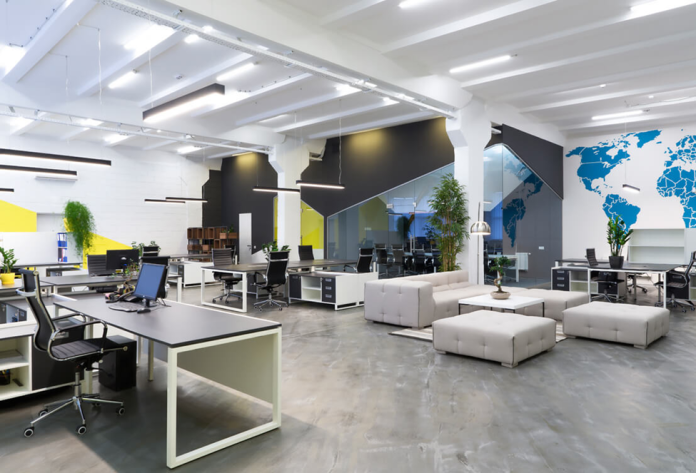Office interior design is a key element in creating a productive and stimulating workplace. This encompasses the layout, aesthetics, and functionality of the office environment, which impacts employee morale, productivity, and happiness. A well-designed office space balances comfort and functionality, encouraging creativity, collaboration, and efficiency for its occupants. From furniture choices to color palettes, every detail plays a role in shaping the atmosphere and experience of your workplace. Take a look at some attractive office space interior design ideas to help you create a space that meets the needs and goals of modern businesses.
When it comes to office interior design, creating a functional and inspiring space is key to promoting productivity and happiness among employees. From maximizing natural light to seamlessly integrating technology, thoughtful design decisions can transform your workplace into a vibrant center of creativity and collaboration.
1. An oasis of natural light
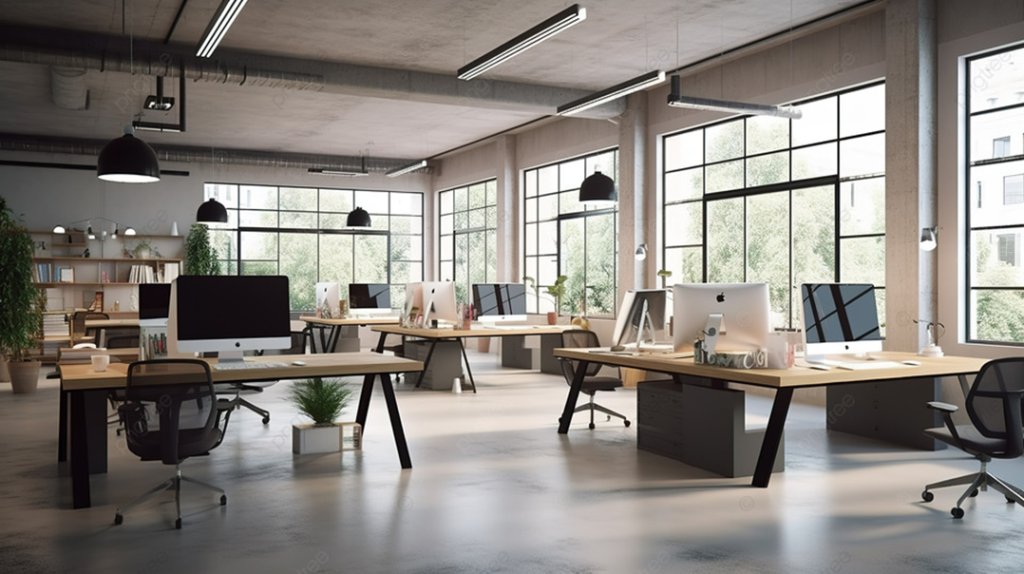
To take advantage of natural light in your office design, workstations should be strategically placed near windows to make the most of daylight. This design choice not only reduces reliance on artificial lighting but also creates a brighter and more attractive workplace. Sheer curtains can help diffuse strong sunlight and prevent glare while maintaining a comfortable atmosphere. Additionally, incorporating live plants throughout your office space not only enhances aesthetics but also helps purify the air and create a sense of connection to nature. Overall, natural light promotes employee happiness, productivity, and creativity by creating a comfortable and stimulating work environment.
2. Functional Design:

Priorities in office design include selecting furniture and arranging workspaces to support employees’ physical health and comfort. By investing in ergonomic chairs and standing desks with adjustability, employees can customize their sitting and standing positions to reduce tension and discomfort. Proper workstation placement promotes good posture and circulation, ultimately minimizing the risk of musculoskeletal problems and increasing productivity. Functional ergonomics contributes to a positive work experience by promoting physical health, allowing an employee to remain focused and efficient throughout the day.
3. Creative Wall Display Office Design :
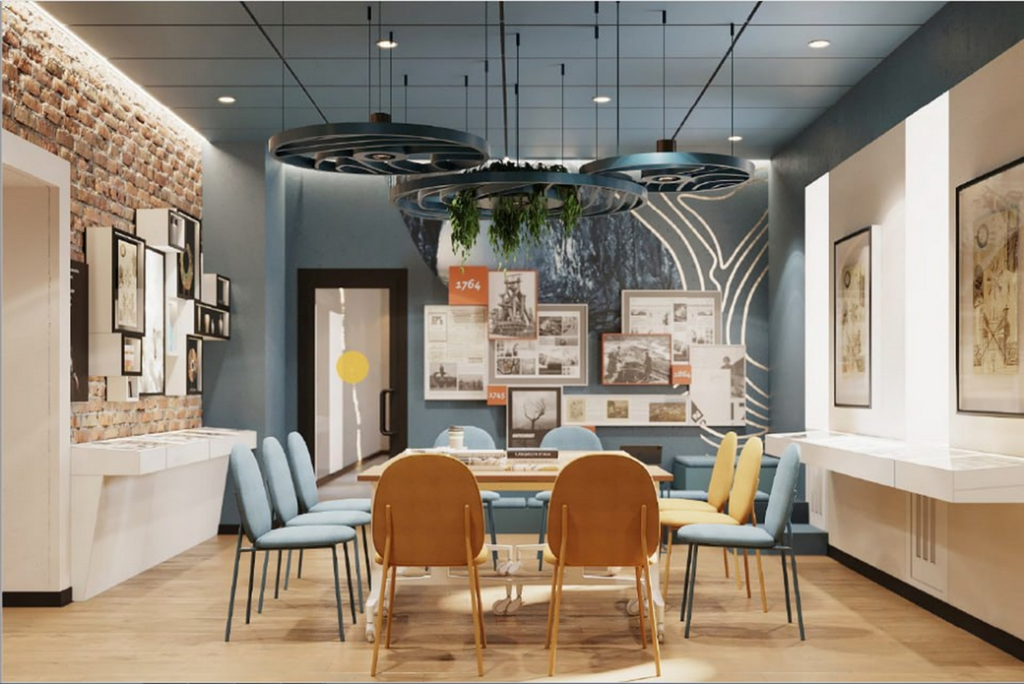
Creative wall displays in office interior design promote employee engagement and inspiration by showcasing artwork, motivational quotes, and company achievements, creating a visually stimulating and culturally rich workplace. Contribute to. Employees are encouraged to contribute their creative input, fostering a sense of ownership and community. Interactive elements such as magnetic boards and pinboards also encourage collaboration and the exchange of ideas, encouraging communication and teamwork. Overall, creative wall displays add personality to office spaces, reinforce corporate values, and promote a vibrant and consistent organizational culture.
4. Flexible Workspace :

Designing a flexible workspace is about creating an adaptable space that can accommodate a variety of work styles and activities. By installing movable partitions and modular furniture, you can easily reconfigure your office layout to suit your changing needs and preferences. This flexibility allows employees to choose the environment that best suits their tasks, whether it’s individually focused work, collaborative brainstorming sessions, or informal meetings. Flexible workspaces that are customizable and versatile allow employees to work more efficiently and creatively, ultimately driving innovation and productivity within an organization.
5. Digital-Savvy Solutions :

Seamlessly integrating technology into the office environment increases efficiency and employee connection. Features such as intelligent lighting systems and wireless charging stations not only optimize daily work but also contribute to a more modern and comfortable workplace. Advanced communication tools and digital collaboration platforms enable seamless interaction and information sharing regardless of physical location. By prioritizing technology-savvy solutions, companies can stay ahead of the curve and create digital-friendly work environments that support innovation and growth.
6. Texture and Contrast:
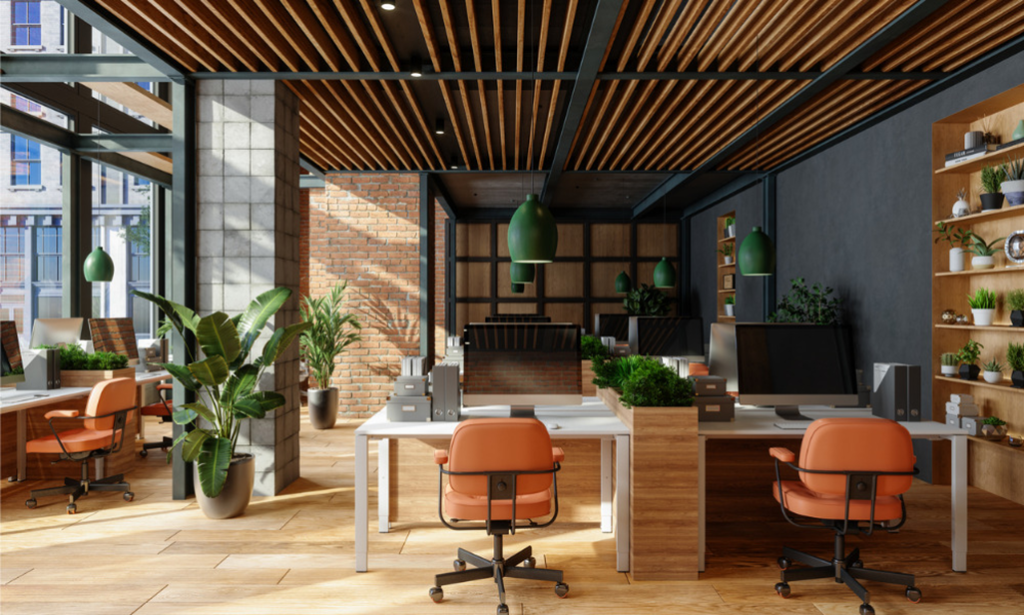
Incorporating different textures and contrasting elements into your office design adds visual interest and depth to your workspace. Combining materials such as wood, metal, and glass creates a dynamic and inviting environment that stimulates the senses. Texture and contrast not only improve the aesthetics of your office but also contribute to a more exciting and inspiring atmosphere. By integrating tactile and visual elements, office spaces evoke emotion, stimulate creativity, and promote employee well-being.
7. Color psychology :

Using the psychological effects of color, you can influence mood and behavior in your office environment. Choosing calming colors like blue or green for your work areas will help you feel calmer and more focused, increasing your productivity and focus. Conversely, introducing uplifting accents of yellow and orange into common spaces can encourage communication and creativity, creating a dynamic and inviting atmosphere. By using color strategically, companies can create a harmonious and balanced workplace that promotes employee happiness and performance.
8. Personalized accents :
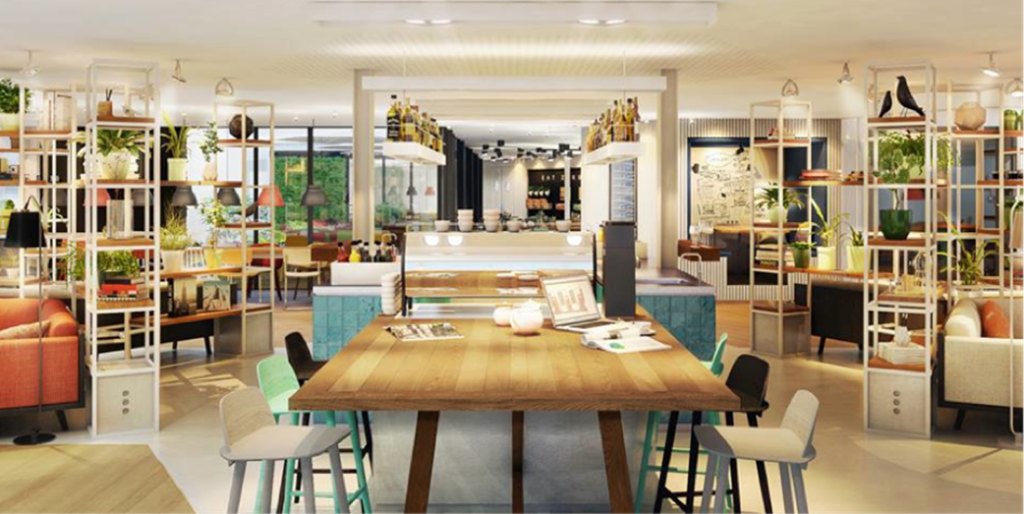
Allowing employees to customize their workspaces with meaningful decorative items and personal touches fosters a sense of ownership and belonging within your organization. Providing opportunities for self-expression promotes a positive work culture and increases employee engagement and satisfaction. By designating areas to personalize while maintaining an overall sense of unity, individuals can create a workspace that reflects their personality and preferences, ultimately increasing morale and productivity.
9. Green Design Principles :
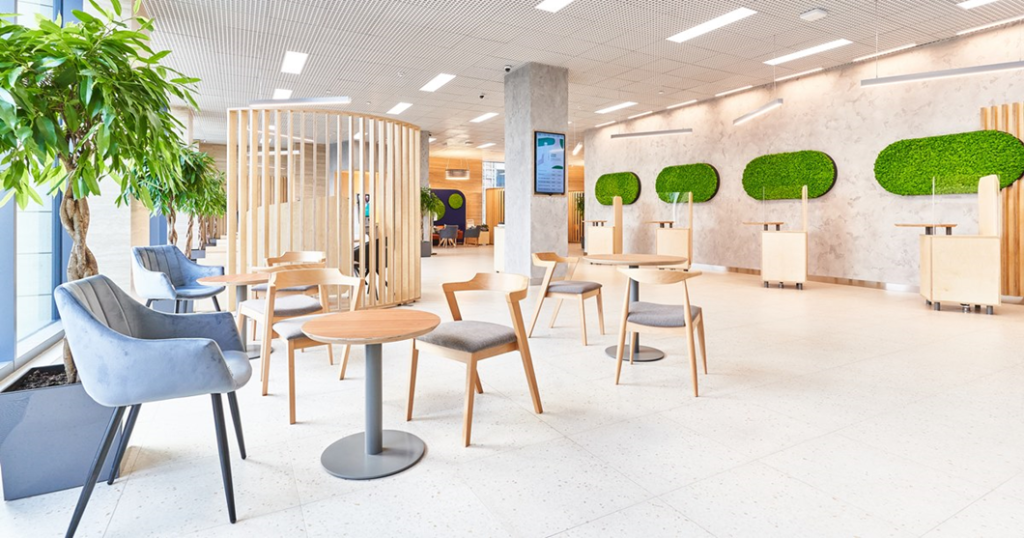
Adopting green design principles in office design requires incorporating sustainable methods and materials to minimize environmental impact. Choosing energy-efficient lighting and recycled materials reduces resource consumption and promotes environmental friendliness. Incorporating biophilic design elements such as living walls and indoor gardens can improve air quality, strengthen your connection to nature, and create a healthier, more inspired workplace. By prioritizing sustainability, companies can create a positive and positive work environment while demonstrating their commitment to the environment.
Latest Blogs
- Inside Virat Kohli Restaurant New “One8 Commune” in Hyderabad

- What makes Tulsi a sacred and beneficial plant for home and health?

- Inspiring Wall Color Combinations for Your Home in 2024: Latest Styles & Designs

Book Your Products from Here Get Offers On Amazon
- Ergonomic Office Chair
- Height-Adjustable Standing Desk
- Desktop Organizers
- Dry Erase Board or Whiteboard
- Motivational Wall Art
- Task Lighting


















